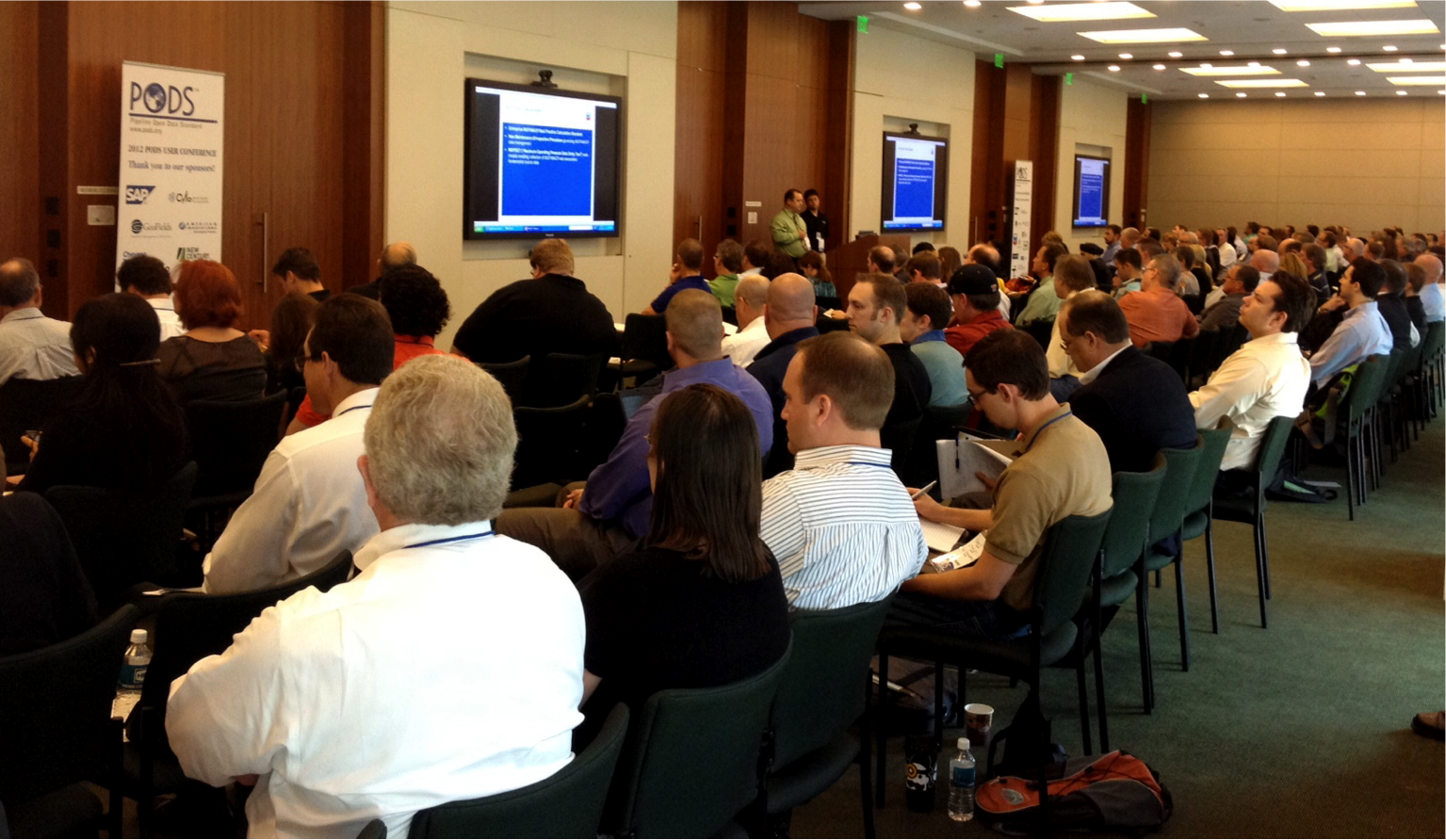March 2014, Vol. 241 No. 3
Q&A
PODS-OGC Collaboration Designed To Help Operators

As the oil and gas pipeline industry has grown more complex in recent years, an organization was created that continues to help operators improve the efficiency of their data systems through a unique tool.
The PODS (Pipeline Open Data Standard) Association is an international non-profit consensus-based standards organization that supports the pipeline industry with more than 150 member companies. Its stated goal is “to develop and support open data storage and interchange standards to help pipeline operators deal with their specific data management needs.” The tool of choice they offer is the PODS Data Model, which supports the reliable exchange of information between multiple databases, applications, vendor software and different operators.
Recently, PODS signed a Memorandum of Understanding with the Open Geospatial Consortium (OGC), in an effort to broaden its ability to provide more and better services to pipeline operators.
In this interview, Janet Sinclair, P.E., Executive Director of the PODS Association, discusses the opportunities that working with the OGC will offer the pipeline industry. She holds a Bachelor of Science degree in Chemical Engineering and is a licensed Professional Engineer in California and Utah. She has more than 20 years of management and engineering experience in the natural gas, refining, and power industries.
P&GJ: What type of projects do you plan to work on with the OGC?
Sinclair: The PODS Association has long provided a mechanism for bringing together members of the pipeline industry to develop vendor-neutral technical solutions to data management challenges. The OGC has a strong focus on interoperability and has been advancing open standards for sharing geospatial information for nearly 20 years. My hope is this collaboration will allow us to bring new expertise from outside our industry to bear on some of the interoperability challenges we face in collecting and managing pipeline lifecycle data from conceptual design to decommissioning.
One potential project is in the area of new pipeline construction. PODS has been working with the International Pipeline and Offshore Contractors Association (IPLOCA) for more than a year to identify recommended additions to the PODS Data Model for capturing important data associated with design and construction phases of pipeline projects. The joint PODS-IPLOCA Work Group is nearing completion of Phase I activities and is poised to deliver its recommendations to the PODS Board of Directors shortly.
A logical next step would be to form a new work group including OGC resources to develop an exchange language for this data, perhaps similar to xml for specific pipeline data, which would allow all of the various parties involved in pipeline design and construction activities to easily capture and share data to populate a PODS database. Solving this would provide huge benefit to the pipeline industry and would be an excellent project for the PODS-OGC collaboration.
I hope to identify other potential PODS-OGC joint projects with input from PODS member companies. To that end, PODS will hold its third annual Operator-Only Forum on April 22 in Houston. Historically, this meeting has brought together the majority of operating companies who use the PODS Model in one room for the purpose of sharing insights and discussing common challenges. This full-day PODS meeting will again be held in conjunction with the Esri Petroleum GIS Conference, which takes place April 23–25 at the George R. Brown Convention Center. Additional details and registration for the PODS Operator-Only Forum can be found at www.pods.org.

P&GJ: How has the PODS Data Model become the industry best practice for managing pipeline data?
Sinclair: First, since the term “Data Model” may not be familiar to those outside the IT department, it’s important to say that a pipeline “Data Model” is just a data structure that represents a real-world pipeline, but in database format that software applications can understand. Similar to the way that a Piping and Instrument Diagram (P&ID) represents a large amount of information about a pipeline in a schematic drawing format, a PODS model represents a large amount of information about a pipeline in a database format.
So PODS is a database structure designed to represent all of the components and features of pipelines, plus all activities that occur during the life of the pipeline (such as inspections, repairs, operating information, HCA classification, risk analysis, reporting, etc).
The PODS Data Model has grown five-fold since it was first developed in 1998 and has evolved to accommodate advancements in inspection technology (such as inline inspection), regulatory requirements, as well as additional requests by pipeline operators. Multiple pipeline operators and service providers have contributed technical content to PODS, and the PODS Technical Committee has refined and incorporated this input into the PODS model, making it the best practice-integration platform available.
P&GJ: How does the PODS Data Model work?
Sinclair: I think the real genius of the PODS Data Model is the way each record has an ‘address’ on the pipeline. This ‘address’ can either be a single point on the pipeline or it can be a continuous range along the pipeline. The PODS Data Model allows for an unlimited number of records to be layered all along the pipeline at the ‘address’ where each record applies.
This methodology is called linear referencing and is the backbone of the PODS data model. The PODS Data Model uses fields such as current indicators, and effective from and effective to date fields to help users maintain both current and historic information about their pipelines.
It’s far more complicated that than, of course, but this is an easy mental picture of how PODS works. Similar to how each house has an address identifying where it is located on the street, each digital record in PODS has a ‘pipeline address’ called a Station Point that says where that record belongs on the pipeline. This allows users to query the PODS database by location and return any of the desired information in either graphical or tabular formats for easy consumption.
The PODS Association provides the PODS Data Model on three platforms, PODS Relational (for Relational Database Management Systems) for Oracle or SQL Server, and PODS Esri Spatial for the Esri ArcSDE platform. All three versions of the PODS Data Model are in use by pipeline operators, both large and small. The single-largest PODS implementation I am aware, in terms of pipeline mileage at least, is actually the U. S. National Pipeline Mapping System. This PODS implementation maintains data for more than 500,000 miles of pipelines.
P&GJ: How can PODS help with integrity management?
Sinclair: In my opinion, the most significant challenge of pipeline integrity management is ensuring that the decision makers have easy access to a complete, integrated, and accurate picture of the pipeline, its activities, history, surroundings, and risks, for each and every segment of pipe. That is a tall task for operators to keep current, considering the amount of data grows substantially with mileage and over time.
This picture needs to include asset information (material, wall thickness, diameter, etc.), inspection data (such as anomalies found by ILI), repair data, information about the operation of protective systems, and operational data. This picture needs to include information about the surroundings (such as structures, waterways, terrain), surveillance and One Call activities. This picture also needs to include the results of past risk assessments and determinations, and regulatory reports.
PODS provides the industry standard architecture to accomplish this and PODS is the most widely used system for managing this type of information in the pipeline industry.
P&GJ: How can someone get a copy of the PODS Data Model?
Sinclair: PODS is a voluntary consensus standard developed to help pipeline operators manage pipeline data and comply with regulatory requirements, specifically those related to integrity management. The PODS Data Model is maintained by the PODS Association, a non-profit industry standards organization with more than 150 member companies.
Access to the PODS standard is through membership in the PODS Association. Membership is open to pipeline operators, software, data, engineering, and service providers as well as government agencies. Membership provides all current releases of the PODS Data Model, and associated documentation, as well as other member benefits. Membership also entitles companies to employ the PODS Data Model for managing their pipeline assets or to develop software applications based on the PODS structure.
Corporate memberships range from $500-5,000 depending on the type of company, and membership provides all employees within your company and all of its subsidiaries with full member access. Contact me at janet.sinclair@pods.org, or +1 (801) 583-1013 with any questions regarding membership. You can also join the PODS Association by visiting www.pods.org.





Comments